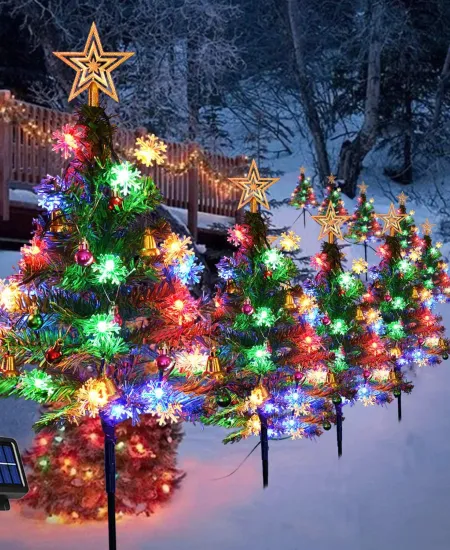The Great Debate: To Solar or Not to Solar Your Christmas Lights?
Every year, as the holiday season approaches, many of us face the modern-day conundrum: how do we keep our festive spirit up with the lights without letting our energy bills skyrocket? Enter solar-powered Christmas lights—eco-friendly, wallet-friendly, and apparently, a hassle-free solution at first glance. But are they truly worth the investment for lighting up your yard? Let's delve into my personal journey with them, backed by some solid research.
First Impressions and Setup
I still remember the excitement of unpacking my first set of solar-powered Christmas lights. The promise of not having to run extension cords all over the lawn or scrambling to find available power outlets was a huge relief. They're pretty straightforward to set up: you just place the solar panel where it gets the most sunlight during the day, and voilà, you're all set. But, as with all things, the devil's in the details—or in this case, the sunshine.
- The placement of the solar panel is crucial. It needs direct sunlight to charge effectively. If you live in an area that's more 'gloomy' than 'sunny' around Christmas time, the performance can be patchy.
- Lighting duration is another point to consider. Most well-charged solar lights will give you about 8-10 hours of light. However, on cloudy days, this could significantly decrease. (homesandgardens.com) (energysage.com)
Cost Analysis: Savings vs. Initial Investment
Let's talk numbers, because, at the end of the day, we all want to know whether our investments pay off. Initially, solar Christmas lights can be more expensive than your regular plug-in lights. For example, a decent quality string of solar lights can set you back anywhere from $20 to $40, whereas a similar traditional set might be around $10 to $20.
However, consider this: the average electricity cost for running a standard set of Christmas lights for about 5 hours per evening over 30 days is approximately $3 to $4. With solar lights, that expense drops to zero. So, theoretically, over a few holiday seasons, you’ll cover the cost difference.
Environmental Impact: Feel Good While You Light Up
It’s no secret that we’re all trying to make more environmentally friendly choices, and solar Christmas lights are a way to reduce your carbon footprint. Unlike traditional lighting, they don’t rely on electricity derived from fossil fuels. This kind of peace of mind was a big selling point for me, making the switch feel not only practical but also principled.
Longevity and Maintenance: What to Expect?
I learned (the hard way) that not all solar lights are built the same. After my first set died halfway through its second season, I was disappointed. Here are a few tips I wish someone had told me:
- Quality varies wildly, so it's crucial to read reviews and check warranties before buying. Invest in lights with weatherproof and UV-resistant features.
- Maintenance is minimal but important. Cleaning the solar panels regularly can prevent them from becoming inefficient due to dirt and grime buildup.
- Be prepared for possible battery replacements. Most solar lights use rechargeable batteries which may need to be replaced every 1-2 years depending on usage.
Style and Variety: Do They Measure Up?
Originally, solar-powered options were somewhat limited in style. Thankfully, this has changed. Today, there are countless varieties—from icicle lights to multicolored strands to whimsical shapes. Whatever theme you’re dreaming of this holiday, there’s likely a solar option available. And honestly, getting to choose lights that are both gorgeous and good for the planet? That's a win-win in my book.
Conclusion: My Verdict on Solar-Powered Christmas Lights
Having used solar-powered Christmas lights in my yard for the past few years, here’s my bottom line: they are definitely worth considering. They offer considerable savings over time, reduce environmental impact, and come in a wide range of styles to brighten up your holiday décor. That said, it pays to be choosy about the quality and to manage expectations around performance, especially if you live in less sunny locales. (homesandgardens.com)
Heartfelt Advice: Making Your Choice
If you're thinking about making the switch, consider starting small—perhaps a single strand to test their effectiveness in your specific environment. Monitor how well they perform over the season, and if you're satisfied, you can add more next year.
Remember, the essence of the holiday season is to bring light and joy into our lives. Whether those lights are powered by the sun or the grid, the choice you make will add that special sparkle to your celebrations. Here’s to a bright, merry, and light-filled holiday season! (energysage.com)
Subscribe to our email newsletter and unlock access to members-only content and exclusive updates.

Comments